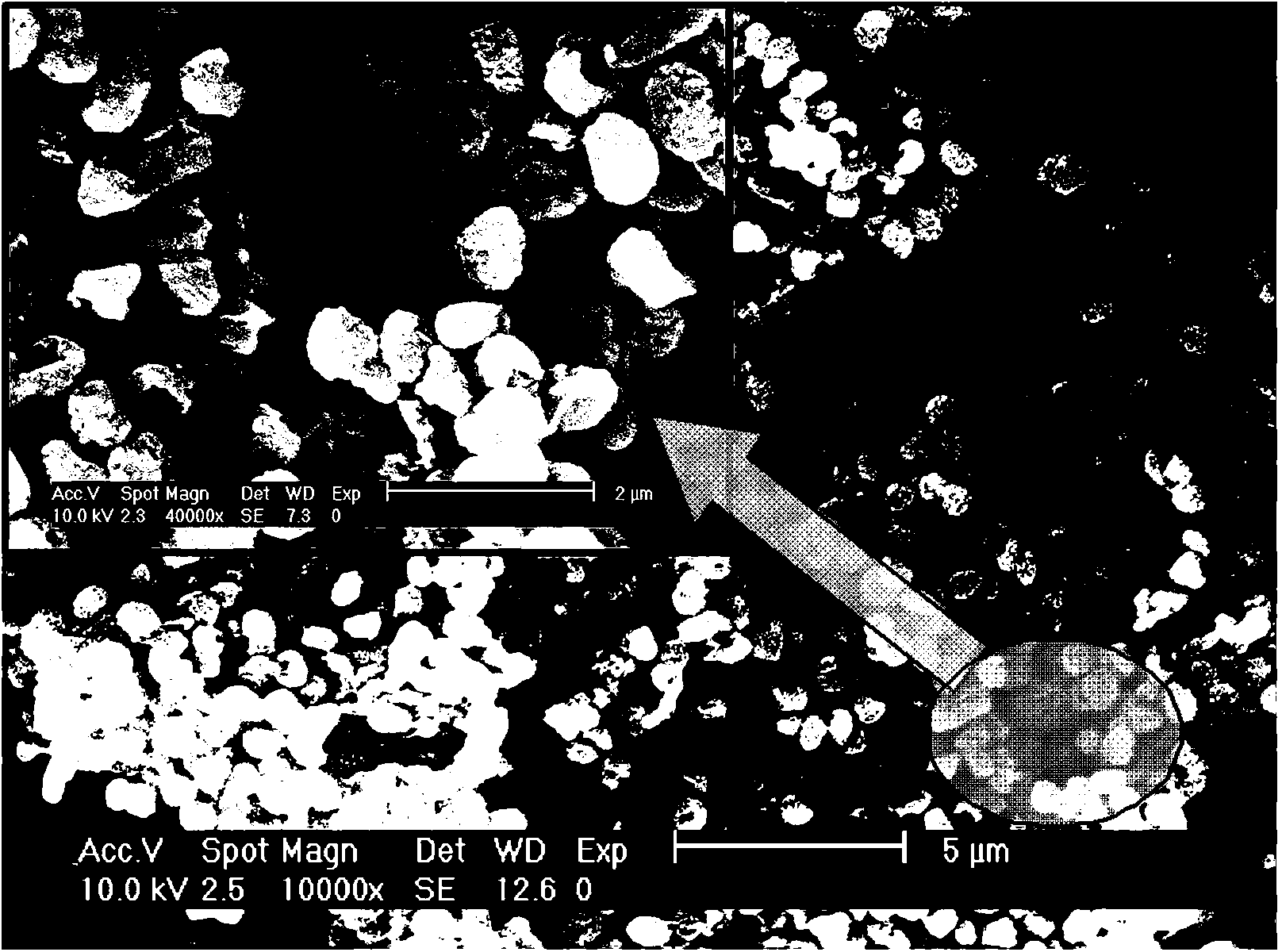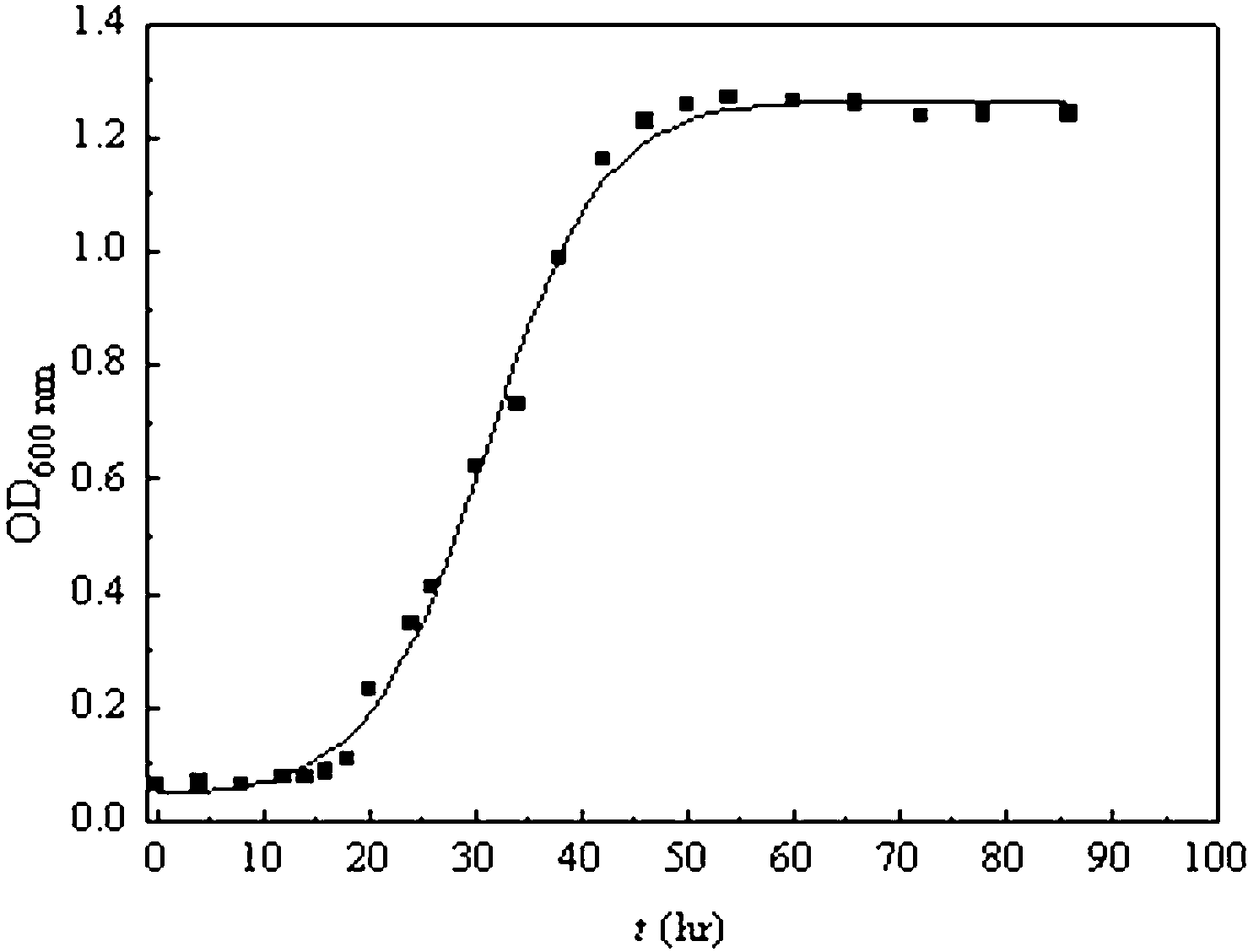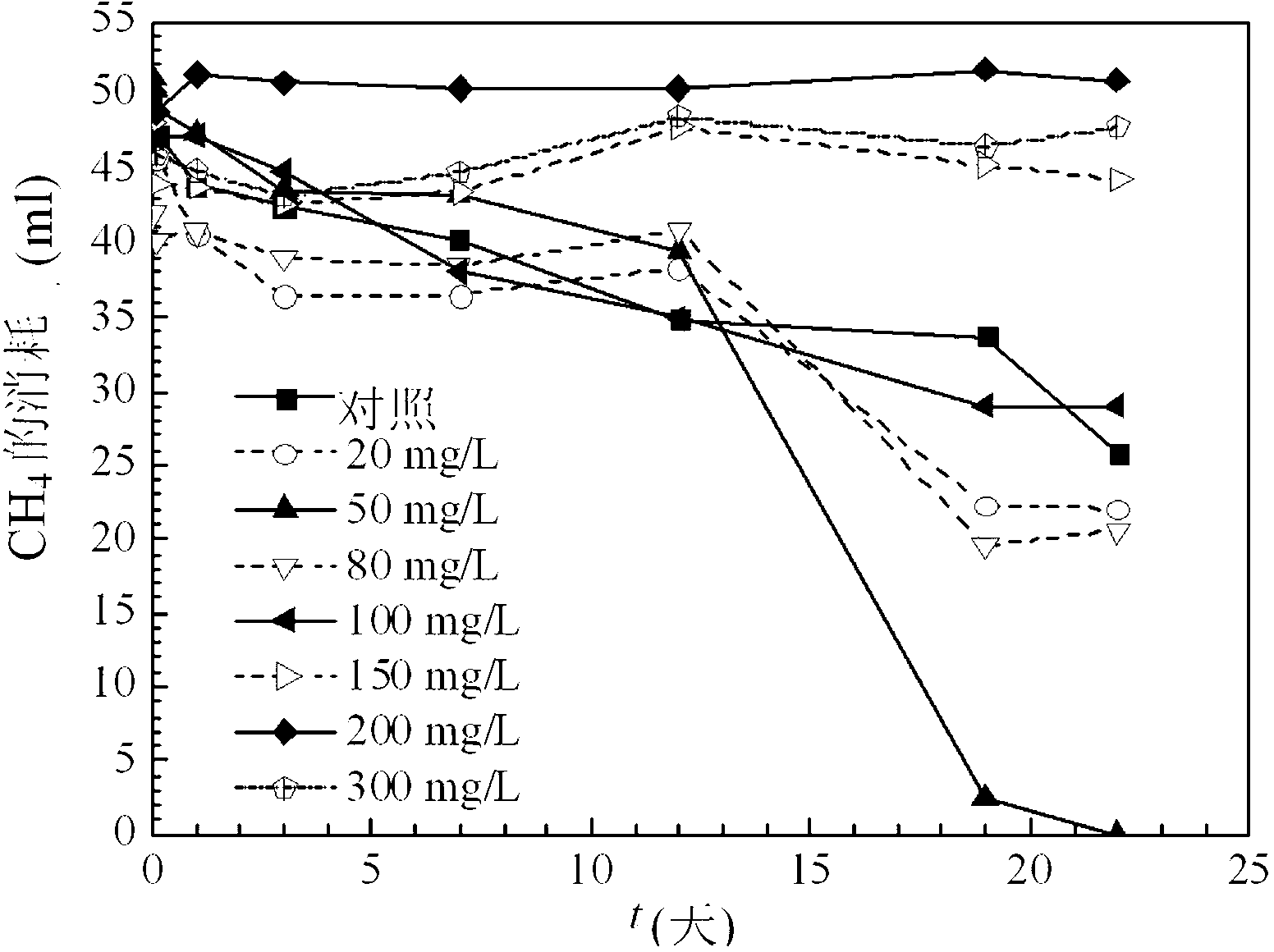Facultative methanotroph capable of degrading chlorohydrocarbons, and its applications
A technology of methane-oxidizing bacteria and chlorinated hydrocarbons, applied in the field of environmental microorganisms
- Summary
- Abstract
- Description
- Claims
- Application Information
AI Technical Summary
Problems solved by technology
Method used
Image
Examples
Embodiment 1
[0033] Example 1 Methylocystosis Methylocystis Purification and identification of sp. JTA1
[0034] The bacterium is a gram-negative bacterium, the colony diameter is about 1 mm, the color is white and translucent, protruding, the edges are neat, and the surface is shiny; Gram staining is negative. Cell electron microscope scanning photo see figure 2 . The cells are short rod-shaped, with the center sunken inward, like a round basin, with an outer diameter of 0.2-0.4 μm and a length of 0.6-0.8 μm. The length of the 16S rDNA base determination of strain JTA1 is 1397 bp (SEQ ID NO: 1), and the base sequence was compared in the GenBank nucleic acid sequence database and found to be similar to that of Methylocystium ( Methylocystis sp.) strain H2s and strain SB2 homology were above 97%.
[0035] Methylocystis Methylocystis The growth curve of sp. JTA1 strain (see figure 2 ) shows that Methylocystium spp. Methylocystis The lag period of sp. JTA1 strain was about 15 h...
Embodiment 2
[0036] Example 2 Strains Methylocystis sp. JTA1 utilization of carbon sources
[0037] Use NMS medium to prepare 10 kinds of solutions such as methanol, sodium formate, formaldehyde, methylamine, urea, ethanol, sodium acetate, lactose, glucose and sodium malate at 3 g / L for later use; take 20 ml of the above 10 kinds of NMS medium and add 100 ml serum bottle, take another serum bottle and add 20 ml NMS medium without adding carbon source as a control. Sterilize the above-mentioned medium by high-temperature steam at 121 °C. After cooling, add 1 ml of seed bacteria liquid into the bottle with a micropipette, cover the rubber stopper and shake well, put it in a shaker and set it at 30 °C and 160 °C. Cultivate for 3 to 5 days under the condition of rotation / min. Then measure the OD of the bacterial solution 600 nm The value was used to determine the growth of the bacteria, and the results are shown in Table 1. Strain JTA1 can use methanol, ethanol and sodium acetate as carb...
Embodiment 3
[0040] Example 3 Methylocystis sp. JTA1 tolerance to different concentrations of chlorine
[0041] Add OD 600 nm 1.05 JTA1 bacterial solution to 20g mineralized garbage, and add 50, 60, 80, 100, 150, 200, 300 mg / L chloroform solution 1 ml to the culture system respectively. Cultured at 30°C for 22 days to investigate the effect of methane oxidation. Depend on image 3 It can be seen that when the concentration of chloroform is less than 80 mg / L, the activity of the strain JTA1 is enhanced compared with the control test. When the concentration of chloroform was 50 mg / L, methane was completely oxidized after 22 days. When the concentration of chloroform was greater than 200 mg / L, the bacteria were completely inactivated due to the biological toxicity of chloroform.
PUM
| Property | Measurement | Unit |
|---|---|---|
| Length | aaaaa | aaaaa |
Abstract
Description
Claims
Application Information
 Login to View More
Login to View More - R&D
- Intellectual Property
- Life Sciences
- Materials
- Tech Scout
- Unparalleled Data Quality
- Higher Quality Content
- 60% Fewer Hallucinations
Browse by: Latest US Patents, China's latest patents, Technical Efficacy Thesaurus, Application Domain, Technology Topic, Popular Technical Reports.
© 2025 PatSnap. All rights reserved.Legal|Privacy policy|Modern Slavery Act Transparency Statement|Sitemap|About US| Contact US: help@patsnap.com



